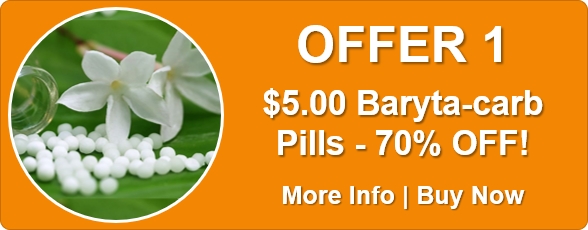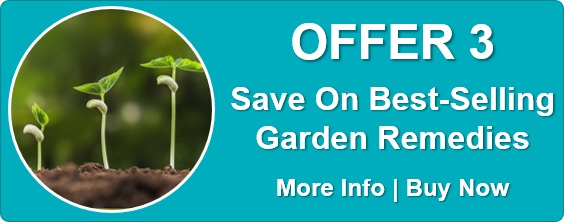Tutorial 12 – Treatment Approaches Compared

As discussed in previous tutorials, Homeopathy is a comprehensive medical system based on the Law of Similars, or ‘like treats like.’
In this tutorial, we will explore other medicinal therapies available today and compare them with homeopathy.
Conventional Medicine (Allopathy)
Allopathy is ‘mainstream’ medicine that employs chemicals and crude doses. A common example of an allopathic medicine is Panadol (paracetamol) – a drug used to reduce fevers. The chemical effect of Panadol lowers your temperature in about half an hour. However, once it leaves your body, the fever returns, necessitating another dose.
Most medicines purchased from a pharmacy function similarly – they alleviate or eliminate symptoms while in your body, but symptoms return once the dose wears off.
Are there similarities?
Both homeopathy and allopathy aim to relieve suffering and restore health.
What are the differences?
While homeopathy is based on the ‘Law of Similars’, allopathic drugs are prescribed to counteract symptoms. For instance, chronic diarrhea is treated with drugs that induce constipation in healthy individuals – they produce the opposite effect of the symptom being treated. Prescribing by opposites only suppresses symptoms temporarily and never truly cures them. As the medicine’s effect wears off, the problem returns, often worse, as the body gradually becomes resistant to these drugs.
In contrast, homeopathy employs ‘similars’ to stimulate the body to heal its own symptoms. Remedies are chosen for their ability to mimic rather than counteract the symptoms of the unwell person. Chronic diarrhea, for example, would be treated with a remedy that causes diarrhea in a healthy person. This stimulating approach, rather than suppressive, prompts a rebound effect from the body, leading to restored health.
Another difference between allopathy and homeopathy is that allopaths treat various symptoms as separate diseases even if they occur in the same person. For instance, recurrent migraines and diarrhea would be treated with two distinct allopathic medicines. Homeopathy, however, considers these problems as part of an overall disorder to be treated as a single illness with one remedy at a time.
Lastly, allopathic medicines pose more risks than homeopathic remedies. Since allopathic medicines are chemically based, patients risk drug interactions and toxic side effects. In contrast, homeopathy uses energetic remedies that do not cause chemical side effects, poisoning, or interactions with other medications.
Bach Flower (and Other Flower) Remedies
Dr. Edward Bach believed that negative emotions impact our physical health, and in the early 1900s, he developed 38 flower remedies to rebalance these emotions, enabling the body to return to health.
Are there similarities?
Bach Flowers and other flower remedies resemble homeopathy in that they are energy medicines, not relying on chemicals for their effects. They are non-toxic and safe for everyone, from the young to the elderly, expectant mothers, and even pets or animals. They share a similar taste with liquid homeopathic remedies, making them pleasant to use and easy to take.
What are the differences?
Flower remedies have weaker and gentler effects than homeopathic remedies and primarily target emotions. In contrast, homeopathy addresses physical and emotional aspects simultaneously. Since flower remedies have not undergone standard homeopathic provings (trials), it is unclear whether they work by suppressing symptoms through the Law of Opposites or curing them through the Law of Similars.
Schuessler’s Tissue Salts
Tissue salts, also known as Biochemic remedies, celloids, or cell salts, were developed in the 1800s by a German homeopath named Schuessler. He believed that deficiencies in one or more of these 12 salts led to disease and that these salts would be more easily absorbed if prepared as weak homeopathic potencies.
Are there similarities?
Tissue salts, often mistaken for supplements, are actually weak homeopathic remedies. The amount of salt in each remedy is too small for any nutritional benefit. Prepared in low potencies (6X or 12X) from the decimal potency scale, they are non-toxic and safe like all homeopathic remedies. However, they should be used only when symptoms are present and not taken continuously like supplements.
What are the differences?
Tissue salts have a more limited action compared to other homeopathic remedies. Prepared only in low potencies, they may not act deeply enough to impact chronic disease or mental-emotional symptoms. In contrast, other homeopathic remedies (with thousands available) come in various potencies that can address deep-rooted chronic issues and simple complaints, offering more options with homeopathy.
Vitamin and Mineral Supplementation (Nutritional Therapy)
Proper nutrition is essential for good health. An inadequate diet, poorly absorbed nutrients, or stress-induced nutrient depletion can contribute to infectious diseases, poor healing, chronic health problems, mood swings, and depression.
While artificial supplementation may provide some help, it is not a complete solution. Adopting a nutritious diet, eliminating stressors, and addressing the causes of malabsorption leads to true long-term improvement. Megadoses of vitamins and minerals only mask the underlying problem or create new issues by disrupting the body’s biochemistry.
Are there similarities?
Both supplementation and homeopathic treatment aim to restore the body to a state of “balance.” Homeopathic treatment often includes advice on nutrition and lifestyle changes.
What are the differences?
Supplements address illness superficially, whereas homeopathy works at a deeper energetic level. In many cases, poor absorption, health issues, food cravings, and aversions result from an imbalance in this energy. This is why some individuals develop “nutritional” problems despite an adequate diet, while others do not. In these cases, homeopathy can help where supplements cannot.
Herbal Medicine
Herbal medicine is as old as humanity itself and uses the medicinal properties of raw plants, or the teas and tinctures prepared from them, to treat symptoms of disease.
Are there similarities?
Some herbs heal by the “Law of Similars” and some suppress by “opposites”. Those that treat by similars work better if given in homeopathic potencies. Two examples are: Urtica urens (stinging nettle), used herbally for allergic eczema and diminished milk flow, and Cineraria maritima that resolves eye problems such as conjunctivitis. Both of these herbs treat with greater speed and effect if given in homeopathic potencies. Many herbalists are unaware of this homeopathic relationship even though many other examples exist.
What is the difference?
While gentler than many conventional medicines, herbs still have chemical effects that can poison the body or interact with conventional drugs. When prepared as homeopathic potencies they are free of these problems. Another notable difference is that most herbal remedies taste awful. This makes it difficult to coax children, and even some adults, into taking their medicine. In contrast, homeopathic remedies are dispensed as pleasant tasting sugar pilules or water.
Naturopathy
People often ask what the difference is between naturopathy and homeopathy. Homeopaths are specialists whereas naturopaths are generalists. Naturopathy is an eclectic practice that draws from a range of therapies. Originally, naturopathy used “drugless” lifestyle approaches like diet, exercise, fresh air, pure water, sunshine, and massage. Today, it may include other therapies such as herbs, homeopathy, supplements, flower remedies, energy work, aromatherapy, and more. Each naturopath will have his or her own preferences for treatment.
Are there similarities?
Naturopaths have received introductory training in homeopathy and can prescribe homeopathic remedies for simple acute complaints or first aid situations. Unless they have undertaken further studies in homeopathy, naturopaths are not qualified to treat long term or chronic problems homeopathically.
What is the difference?
In Australia, a naturopath is taught ‘a little of many things’ over a 3-year full-time course (4 years for a bachelor qualification). A homeopath studies only homeopathy and related subjects in their 3-year full-time course (4 years for a bachelor). Your homeopath is qualified to treat the full range of acute and chronic disorders with homeopathy, while your naturopath is not. The Australian Homeopathic Association (AHA) and the Australian Register of Homeopaths (AROH) only register those practitioners who meet government-endorsed standards for homeopathic competencies and education. These bodies can be contacted for practitioner searches either directly or via the web.
In Conclusion
While many of the above therapies are useful in themselves, none have the breadth and depth of homeopathy. Some focus only on mental and emotional problems while others deal with just the physical. Most work by palliation or suppression while some, such as herbal medicine, may occasionally apply the homeopathic effect by accident.
By contrast, homeopathy can be systematically applied at a deep energetic level to heal mental, emotional and physical symptoms of ill-health. Its remedies are non-toxic, do not interact with other medications, and taste great. Everyone and anyone can use them. Homeopathy is truly a remarkable system of medicine.
Tutorials
- Homeopathy: an Introduction
- Tutorial 1 – The Law of Similars
- Tutorial 2 – Law of Similars Discovered
- Tutorial 3 – Potentisation
- Tutorial 4 – Three Scales of Potency
- Tutorial 5 – Benefits of Potentisation
- Tutorial 6 – Provings
- Tutorial 7 – The Vital Force
- Tutorial 8 – Potentised Remedies and the Vital Force
- Tutorial 9 – Palliation, Supression or Cure?
- Tutorial 10 – Direction of Cure
- Tutorial 11 – Return of Old Symptoms
- Tutorial 12 – Homeopathy and Other Medicinal Therapies
- Tutorial 13 – Finding a Good Homeopath
- Tutorial 14 – That First Appointment
- Tutorial 15 – What to Expect (Part A)
- Tutorial 16 – What to Expect (Part B)





